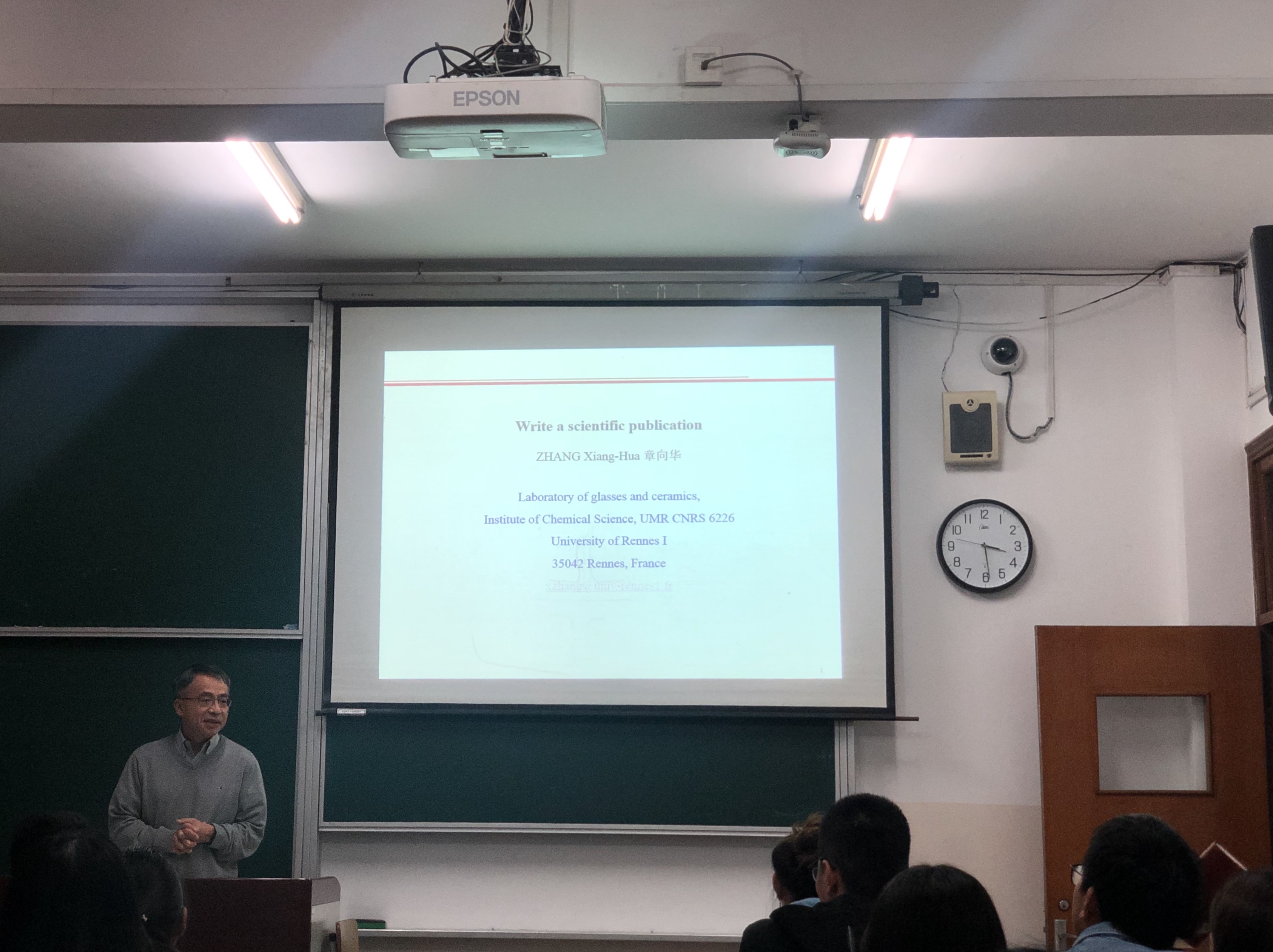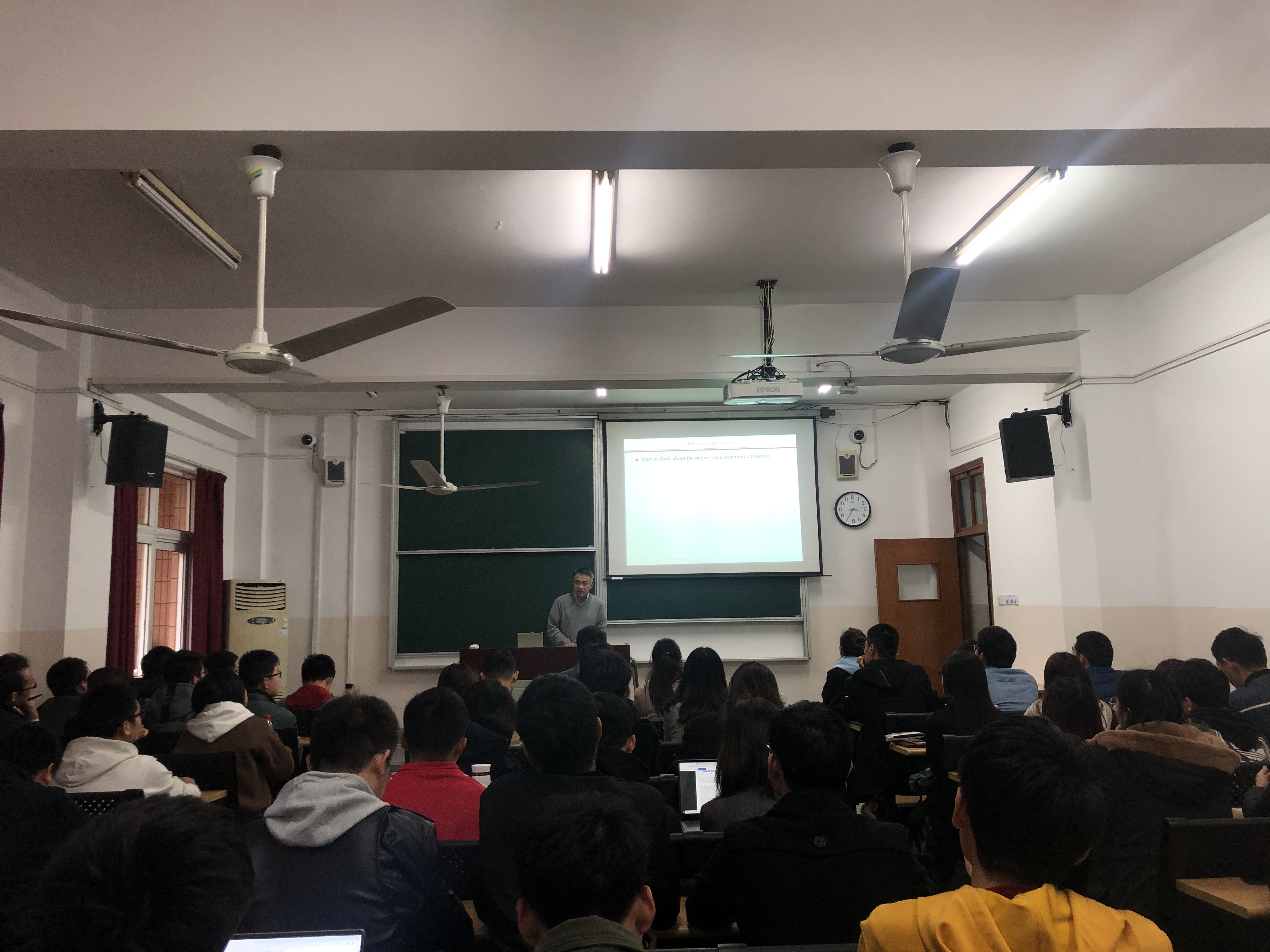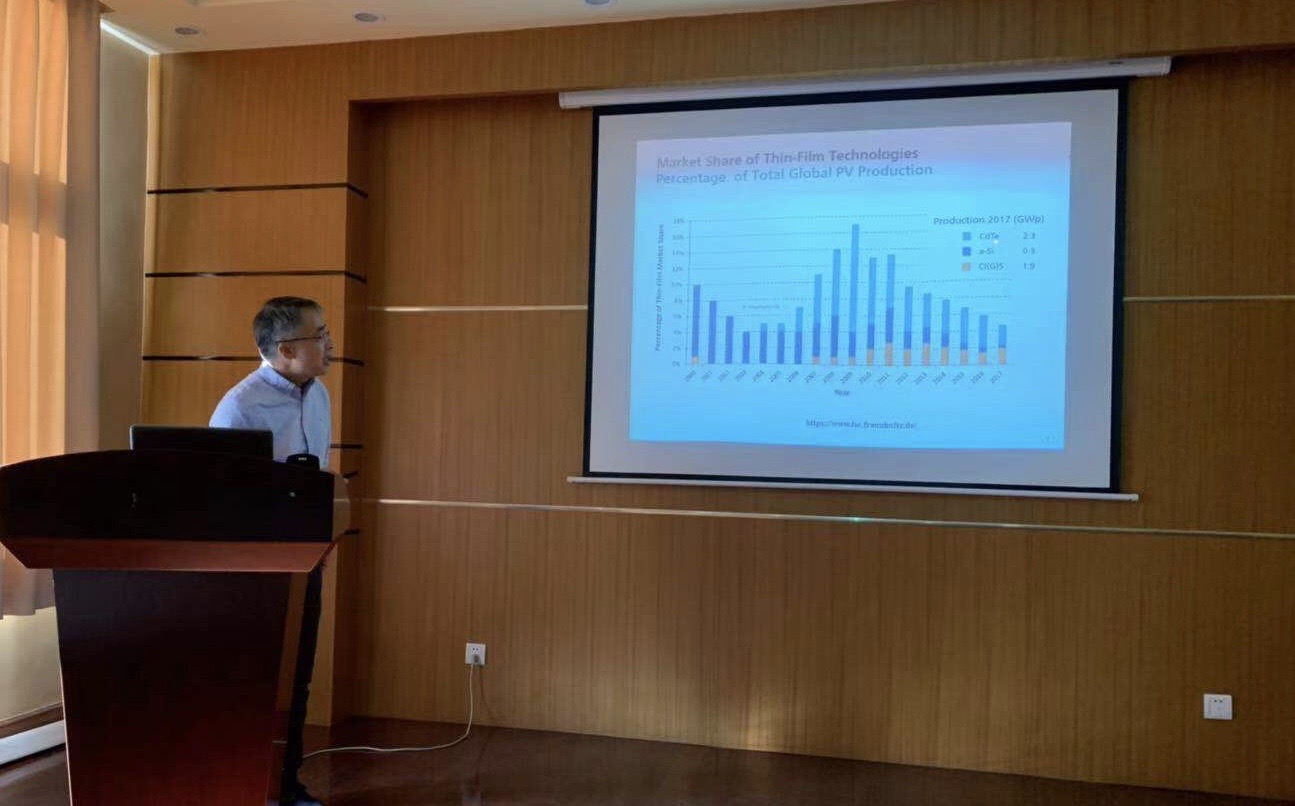近期,应我校材料科学与工程学院曾惠丹教授邀请,法国雷恩第一大学章向华教授来校访问。期间,章向华教授给材料学院一年级无机材料方向研究生授课《科技论文写作》,就如何进行科技论文的写作、科技论文写作的注意问题以及编辑部针对投稿论文的处理程序等进行详细介绍。并就先设计好论文再实验,还是先展开实验再写论文、围绕前沿课题做好选题,把故事讲好等与研究生讨论。
此外,章向华教授为材料学院师生带来了一场题为“Chalcogenide glasses and ceramics What to do next” 的学术报告,吸引了近70名本、硕、博师生到场聆听。章向华教授就硫系材料的应用现况和研究趋势给出了系统性介绍。并就其在光电存储器、薄膜太阳能电池、硫系玻璃的热成像及固态电解质等方面应用进行了讨论研究,令材料学院学生对硫系材料有了更深刻的了解与进一步的学习。
来访期间,章向华教授参观了特种玻璃与光电子材料实验室,并就实验室的设备使用和实验室管理等给出意见和建议。与无机材料研究所的老师深入探讨后期在光功能玻璃领域,尤其是固态电解质相关研究的合作,项目合作或共同指导研究生。


章向华教授在《科技论文写作》课堂

章向华教授“Chalcogenide glasses and ceramics-What to do next”学术报告
章向华教授:法国雷恩第一大学章向华教授,法国雷恩大学玻璃与陶瓷实验室主任,法国国家科研中心一级主任研究员,,固体化学博士,博士生导师,红外光学材料专家。1979年进入浙江大学材料系学习,1983的毕业后留学法国,师从世界著名红外材料专家、法兰西科学院院士鲁卡教授,进入世界著名的红外光学材料实验室——法国雷恩大学玻璃与陶瓷国家实验室。章向华发明了以卤化碲为基础的红外玻璃,并研制成功一整套工业化成型工艺来制造低成本、高精度的红外镜头,广泛应用于国防和工业领域。2002年底起,他在法国国家科研中心玻璃与陶瓷国家实验室负责新材料的研究,所开创的红外纳米复合材料已开始受到同行及工业界的高度重视。章向华先后获得法国IBM青年科学家奖,雷恩市勋章,雷恩市最佳创业奖,法国“国防革新”奖,法兰西科学院Ivan Peyches大奖,为中国学者第一次获得法国法兰西科学院大奖。
报告介绍:
This talk will be a general, but no exhaustive reflection on chalcogenide-related materials. The specificity of chalcogens (S, Se or Te) is its relatively low electronegativity as anion and relatively high atomic mass, compared to oxygen, the base for the most studied (oxide) materials. This specificity gives chalcogenide-based materials some unique properties such as covalent chemical bonding, narrow electronic bandgap, and low phono energy.Chalcogenide materials have been studied since decades. One of the most successful industrial applications is related to memory application. In this area, the famous Ge2Sb2Te5 seems unbeatable as phase change material for optical memory as well as for electric memory. For more and more specific applications, new materials are however requested.Chalcogenide thin film solar cells, particularly, CdTe and CuInGaSe, are almost the only commercial thin film solar cells with however continuously decreasing market share. Other materials are to be (re)invented.Chalcogenide glasses have been studied since a long time and only recently large-scale application is realized for thermal imaging. New compositions and new production processes are still to be developed.Chalcogenide materials have also obvious advantages as solid electrolyte. This maybe one of the major future applications for these materials with however still a long way to go.In summary, chalcogenide materials have many unbeatable features. A precise analysis of the users' need is necessary for developing appropriate materials.